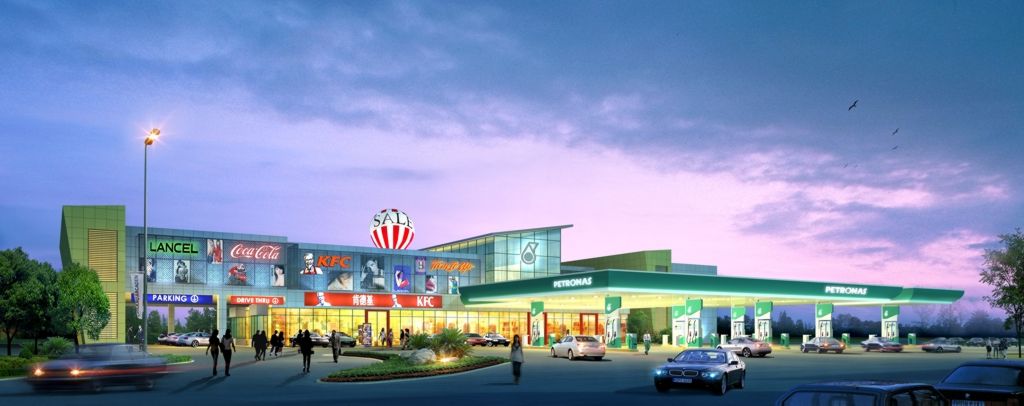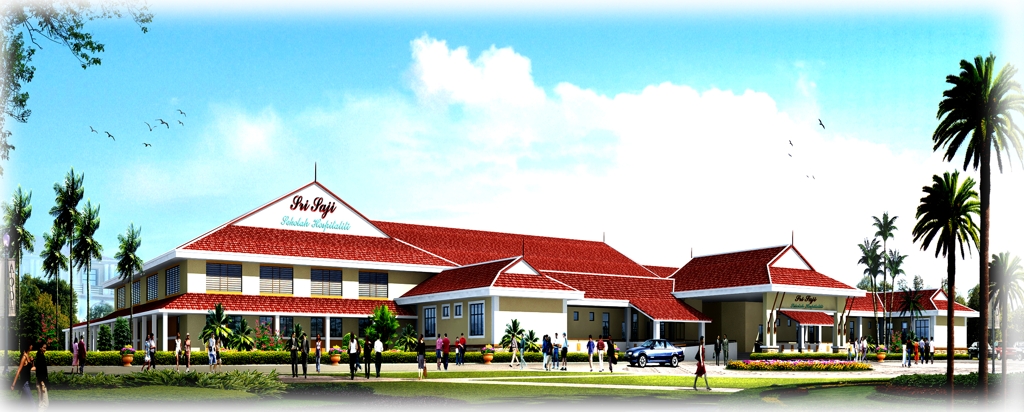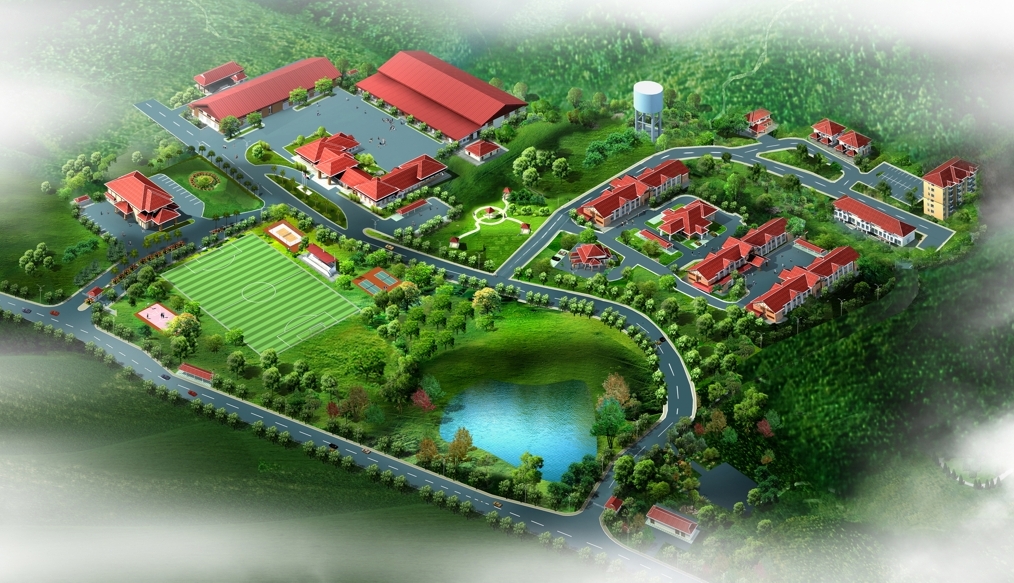-
Can buildings be Malaysian? Architecture Inside Out
Written by admin@kp88sb.com
Sun, 22 Jun 2008
Sunday June 22, 2008
Can buildings be Malaysian?
Architecture Inside Out
PROF DR MOHAMAD TAJUDDIN
Do we have an architectural identity? Yes! But it reflects a top-down feudal culture that tries too hard to copy past nostalgia or foreign grandeur. Can our buildings become more democratic, people-friendly and multi-cultural?
What future does a Malaysian architectural identity have?
In order to predict this, it is first necessary to predict the attitude of its three main actors: the country’s leadership, the leadership of local universities and the architects’ leadership in PAM (Pertubuhan Arkitek Malaysia).
 The National Museum may merely be an out-dated copy or ‘revival’ of traditional architecture rather than being a well-thought out, progressive icon of something ‘Malaysian’. – File photos / The Star
The National Museum may merely be an out-dated copy or ‘revival’ of traditional architecture rather than being a well-thought out, progressive icon of something ‘Malaysian’. – File photos / The Star Of the three, the main one is the country’s leadership. Traditionally, the other two merely have supporting roles in this whole drama. For my money, knowing Malaysian academic and professional culture, I doubt they have the vision or courage to grab the lead role.
If PAM remains a sort of private club with led by people whose very survival depends on Government handouts, it is never going to rock the boat. If, however, the leadership’s financial standing can be sustained by overseas projects, PAM might actually discover a bit more backbone.
As for local universities, traditionally they are nothing more than trade schools at the beck and call of their masters, ie, the industry and the Government.
I have been an academic for 15 years, so I know we are about half a century behind in seeing academicians leading any kind of a crusade for a quality environment, be it a city, a housing estate, or even a house.
Thus, the only remaining actor to watch is the country’s leadership.
Will there be a significant change in the way this country is governed in the near future? Will the leader be a Feudal Supremo? Or will he or she be an “understanding facilitator”?
 The writer believes the Wilayah Mosque tries too much to copy ‘exotic’ foreign architecture to be distinctly Malaysian.
The writer believes the Wilayah Mosque tries too much to copy ‘exotic’ foreign architecture to be distinctly Malaysian. In many of my writings, I have tried to show that Putrajaya reflects the idea of the Leader Supreme whereas the Parliament building reflects a kind of leadership compromise with the rakyat.
In the town of Skudai, near Johor Baru, the Municipality has spent a lot of money sprucing up its own building and adjoining roadway with lavish sculptural landscaping. It’s no secret that the race to be the next “mini Putrajaya” is underway amongst most of the municipalities in Malaysia. Just a few meters into the housing estates behind the Skudai Megalo-Municipality, children can hardly walk or cross the roads safely. There are no pavements, wakafs (shady rest stops) or nice landscaping to rest one’s weary feet.
Thus my prediction is that, if the country’s leadership continues in its strong feudal-democracy style of governance, with universities and PAM playing their supporting roles as grovelling servants, the architectural landscape of congested and polluted cities will prevail. There will be mini Putrajaya kingdoms littering the country?their spires discernable only during haze-free days.
 The Mesiniaga building is a courageous attempt at energy-efficient tropical-friendly architecture, but it lacks local cultural references.
The Mesiniaga building is a courageous attempt at energy-efficient tropical-friendly architecture, but it lacks local cultural references. Have we achieved our architectural identity?
The irony is that? yes, we have! Whatever we see around us is our real-time identity. But it is not our utopian identity.
From the decadent housing estates that are mere parking lots for families to the overwhelming “palaces” of Putrajaya, architecture does not lie about our socio-political situation.
The idea of the Prince and the Peasantry is well acknowledged in the country’s architectural landscape.
Many of the buildings dubbed ”icons” of Malaysian identity are nothing more than the fantasies of the elite few that has never been seriously debated.
The “revivalistic” approach of the (former) Bank Bumiputra headquarters, the National Museum and the Putra World Trade Centre (all in Kuala Lumpur) suggests that we are 200 years behind in intellectual discourse about architectural identity.
The Mesiniaga building (in Subang Jaya, Selangor), although a courageous attempt at tropical-friendly architecture, is trapped in the late modernist framework of an international ”one-world-culture” style.
The only inkling of revolutionary ideas are the National Mosque and the idyllic resorts that spout primitive regionalism.
But no one pays attention to these two phenomenon as everyone is trying to outdo the Putra Mosque and the Wilayah Mosque in a race of exotic, foreign-inspired revivalism.
And of course no one would dream of replicating the serene picturesque landscaping and spread-out development of the resorts for something as “unimportant” as people's housing.
Religious symbolism vs tropical heritage
As I see it, there are two ways to forge a multi-ethnic nation.
One way is to eliminate all ethnic traditions and manufacture a whole new Malaysian entity.
The other way is to recognise and utilise the strength of our multi ethnic heritage. Let’s face it, Islam, Buddhism, and Hinduism have centuries-old teachings with humanistic values that would be absent in a purely capitalistic and “pragmatic” culture.
The trick is to find similarities and tolerate differences whilst growing up on new perspectives.
If politicians with selfish agendas stop exploiting religious differences, and people lose their ignorance of each other’s cultural and religious heritage, Malaysia can become a strong nation with deep roots and far sighted vision.
I would like to propose the idea of organic architecture to solve the problem of national architectural identity. The necessary elements are: local materials, natural landscape and climate, plus cultural/religious heritage.
Some firms have already experimented with tropical-friendly architecture but they are stuck in their “machine aesthetic” devoid of cultural references (eg: Mesiniaga).
On the other hand, cultural references can become skewed. If most architects could only get off the bandwagon of architectural revivalism and imitation, they might be able to chart new design ideas.
For instance, Islamic cultural heritage is not exemplified by big domes, arches and expensive ornaments but is rooted in the idea of humility, non-wasteful gestures, people-friendly planning, and a deep respect for nature as the embodiment of God’s existence.
Chinese feng shui also has a lot to offer environmentalists in relation to sustainable architecture, if one looks hard enough.
Our mountains can offer construction materials uniquely suited for our climate. Our commercial and cultural landscapes also offer unique opportunities of meaningful ornamentation.
Thus a deeper understanding of our religious/cultural/natural landscape and climate can point the way towards buildings that capture the essence of our place and the spirit of our time.
A more participatory idea of governance would go a long way towards realizing the idea of a natural identity as opposed to a negatively manufactured identity or a forced identity.
Universiti Teknologi Malaysia lecturer Prof Dr Mohamad Tajuddin passionately believes that architectural design that respects cultural values, religious sensitivities and the ideals of democracy is vital to nation-building and harmony.










